This sunny Central Oregon treasure is the perfect spring escape for hikers and rockhounds.
At first glance, you see a stunning landscape with multicolored badlands and eroded pinnacles. And you think, this looks like Utah, or maybe even another planet. But it’s right here in the Pacific Northwest. The John Day River cuts trenches through prehistoric rock in this part of Central Oregon, and the result is one of the state’s most incredible places to visit.
Get a little closer and you’ll discover there’s fossils in them thar hills. Composed of sedimentary rocks, the fossils of the John Day National Monument preserve a record of 50 million years of plant and animal life. More than 100 species of mammals have been identified in the monument’s fossil beds, from rhinos and saber-toothed tigers to bats and salamanders. These archives of stone were first discovered by amateur paleontologist Thomas Condon in the 1860’s. They’ve been protected, studied and enjoyed by millions as a national monument since 1975.
Visiting the John Day Fossil Beds
The John Day Fossil Beds National Monument consists of three distinct areas, with a sizable distance through semi-desert ranchlands between them. The three areas are unique units of geologic strata: the Clarno Unit, the Painted Hills Unit, and the Sheep Rock Unit.
You can visit the fossil beds as a day trip from Bend, or spend a few days in the area by staying overnight at one of the small town inns around the monument. Visiting all three units is difficult to do in a single day, yet all are worth your visit, so I suggest carving out time for a two or three-day trip.
When to go: Spring and fall are best if you prefer solitude and mild temps (plus the sun usually shines here, providing a few days of rays for rain-soaked west siders like us). Summers are hot here, with temperatures sometimes reaching beyond 100 degrees, and shade trees are few and far between. Winters can be cold, but are usually dry–just bundle up in layers before you hit the trails.
Get there: From Portland, take I-84 east to Biggs Junction, then go south on US-97 to Wasco, then OR-206 E to Condon. From Condon, take Hwy 19 south to the town of Fossil. The fossil beds are about 4.5 hours drive time from Portland (see directions).
- Admission is free to all units of the John Day Fossil Beds National Monument.
- Be a responsible visitor. Remember that all fossils, historic structures, archeological features, rocks, plants and animals are protected, and they can not be collected or disturbed.
- It’s a good idea to gas up your tank before heading into the fossil beds region, as most of the towns you’ll pass through are tiny and don’t have service stations. You’ll also find few options for eating out, so bring snacks, lots of drinking water and consider packing a lunch.
- Dogs are permitted on all of the monument’s trails but they must be leashed.
- For a great hiking guide to the trails in the monument (and many other wildlands of Eastern Oregon) we recommend 100 Hikes / Travel Guide: Eastern Oregon by William L. Sullivan.
Where to Go
The fossil beds units can be visited in whatever order you like. Our typical weekend itinerary for visiting the John Day Fossil Beds National Monument starts at the Sheep Rock Unit, where we stop by the awesome Paleontology Center and spend a few hours hiking and exploring. After an overnight stay in Mitchell or Fossil (see “where to stay” below), we spend the second day first at the Clarno Unit, followed by the Painted Hills Unit. All three units of the monument have interpretive trails, scenic overlooks for awesome photo ops, and picnic areas with restrooms.
Sheep Rock Unit
The Sheep Rock Unit is the easternmost part of the John Day Fossil Beds, a stark, rocky landscape of colorful strata and complex geology named for the wild bighorn sheep that once peppered the cliffsides. The most characteristic feature of this unit is the blue-green hued rock that is layered in a beautiful ombre pattern, the result of weathered volcanic ash. That brilliant color comes from a mineral called celadonite.
Start your trip at the awesome Thomas Condon Paleontology Center that features cool fossil exhibits, interpretive programs, and audio-visual presentations on fossils, geology, and the processes of paleontology. There’s even a viewing window into the fossil laboratory, where the monument’s paleontologists are hard at work. This paleontology center also serves as the monument’s visitor’s center, so come here to chat with a knowledgeable ranger about your visit and get info on the region’s hiking trails and campgrounds.
Just across the road from Thomas Condon Paleontology Center is the James Cant Ranch House, which served as the monument visitor’s center prior to construction of the shiny new one. This 1917 ranch house is now a museum with two surrounding interpretive trails through an historic ranch and orchard landscape. It’s worth the stop for a relaxing stroll. The River Trail (.5 mile round-trip) is fully accessible to wheelchairs and leads down to the John Day River. The Sheep Rock Overlook Trail (also .5 mile) takes hikers to an overlook with a great view of the valley and the river. Both are great trails for spotting migratory birds in springtime.
Take a Hike: The Blue Basin Overlook Trail in the Sheep Rock Unit is one of the must-do hikes of Central Oregon and certainly of the John Day Fossil Beds. This loop trail (3 miles RT, 600 feet gain) starts from a parking lot about two miles north of the paleontology center on Route 19. Most folks hike the loop clockwise, climbing the dusty path through layered fossil beds to the rim of blue basin and a spectacular vista overlooking the John Day River Valley. Keep an eye out on the ground for scurrying rattlesnakes, and look up to the sky to spot circling hawks.
A shorter hike that departs from the same parking lot is the Island in Time Trail (1 mile RT), a gravel path that ascends to an amphitheater carved out of the blue-green claystone. Interpretive signs point out displayed fossils along the trail.
Painted Hills Unit
Welcome to the most photogenic piles of rock in the Pacific Northwest. The Painted Hills Unit is west of Sheep Rock about nine miles northwest of Mitchell off State Route 26. The hills are more famous for its mounds of folded rock striped with vivid hues like sherbet–scarlet, orange, pink, ochre and bronze–than for the fossils embedded in them.
It’s easy to be effusive about the beauty of this stark, wind-swept topography where millions of years of erosion have sculpted smooth curves into these multi-colored, low-slung hills. Several short, easy trails take you into the hills, where you can get close to the bands of color that represent distinct geologic eras. Stick to designated trails here–don’t climb or walk on the rocky hills themselves. Do take a camera, though–you’ll want to take the memories of this stunning place home with you.
Photo tip: Aim to make this your last stop of the day, as the layer cake of stunning color deepens in beauty as the hills become bathed in the golden low light of early sunset.
The Painted Hills are beautiful throughout the year, though like the rest of the John Day Fossil Beds summers can be very hot and shade trees are few and far between. Come in spring for the amazing display of yellow and purple wildflowers backdropped by the songs of migrating songbirds. Even in winter when snow periodically swaddles the hills in a white coat, outcrops of color jut out in a dramatic fashion, a sight to behold.
Take a Hike: Four short trails lead you into different areas of the colorful hummocks that comprise Painted Hills, each departing at different points along the main road that winds through the hills unit from east to west. Trailheads are well-marked.
First is the Overlook Trail (.5-mile RT), a flat path with sweeping vistas of the hills and the perfect choice for photographing the whole landscape.
On the other side of the road begins the Carroll Rim Trail (1.5-miles RT, 300 feet gain), a climb through a volcanic duff deposit to a birds-eye view of the Painted Hills. A bench awaits at the end for your rest to soak up the scenery.
The Leaf Hill Trail (.5-mile RT) passes through the remains of what was once a deciduous hardwood forest, 30 million years ago. Fossilized leaf exhibits explain the geologic history on this ancient forest.
The short and sweet Painted Cove Trail (.25-mile RT) is a must-do for the close-up examination of the rough pebbles of crimson-tinted claystone.
The newest trail at Painted Hills is Red Hill Trail (.25-mile RT), so new in fact that it’s not marked on many maps. It’s the westernmost trail in the unit and leads you to a hill with a dramatic color shift.
Clarno Unit
Set in a remote corner of the juniper and sage-dotted desert, the Clarno Unit is home to the region’s oldest fossils.
It’s a bit difficult to fathom as you stand here on a relentlessly sunny day, but this land was once covered by an ancient subtropical rain forest that was buried by massive volcanic mud flows around 44 million years ago. Amazing relics of that forest remain in a petrified mudslide, and this unit is unique in that its the only place in the national monument where you can see fossils up close in the huge boulders that flank the short interpretive trails. The rocks also house fossils of extinct animals that once roamed the jungle here, including rhino-like brontotheres and four-toed horses.
Take a Hike: Three short trails at the Clarno Unit, each .5 miles round-trip, can be hiked alone or combined together for a longer hike.
The Geologic Time Trail has interpretive signage that takes you through the area’s geologic history.
The Trail of Fossils gets you an up-close view of dozens of fossils–things like magnolia leaves, palms, logs, ginkgo stems, and even small seeds and nuts–embedded in rock faces and boulders. Both of these trails are backdropped by the distinctive palisades of the Clarno Unit – chalk white cliffs topped with dramatic stone spires.
The Clarno Arch Trail climbs steeply to the base of these Palisades, and the bottom of a fossilized log and an unusual stone arch are found at the trail’s end.
Where to Stay
The three units of the monument are spread out over a large area, and only a few of the area’s tiny towns have motels or inns. A few great, affordable options for a soft bed are below, and there are campgrounds nearby (though not in the monument itself). Some travelers prefer to make a home base west of the monument at one of the larger hotels in Prineville, Redmond or Bend, but we prefer the smaller local inns where the proprietors often serve up some seasoned travel tips along with your room, and maybe even a hot breakfast.
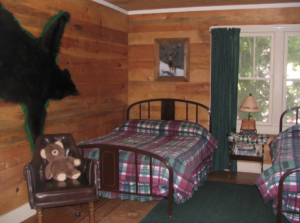 For a cheap roof over your head, The Oregon Hotel in Mitchell is a clean, homey bed and breakfast at a great price with all units well under $100 a night for family-sized rooms–one of the Northwest’s best values (family-sized room room pictured right).
For a cheap roof over your head, The Oregon Hotel in Mitchell is a clean, homey bed and breakfast at a great price with all units well under $100 a night for family-sized rooms–one of the Northwest’s best values (family-sized room room pictured right).
Another terrific option is the Lodge at Service Creek (between Fossil and Kimberly on Hwy 19), part of a small outpost that also includes a roadside restaurant with awesome homemade pies and a basic general store. Rooms run about $85-$125. Starting May 2018 they rent spacious camping tents that sleep up to five for $29 per night.
Just southeast of the Sheep Rock Unit in Dayville is Fish House Inn and RV Park, a country inn housed in a vintage craftsman home and cottage, behind which are glamping tents and a seven-space RV campground with hookups in a lovely park-like setting. All room rates are under $100 nightly.
Where to Camp
Pitch your tent or unhitch your travel trailer at Ochoco Divide Campground set in a fragrant ponderosa pine forest at the summit of Ochoco Pass off U.S. 26 southwest of the Painted Hills Unit. The campground’s 28 campsites usually open for the season by late May, and close for winter by November. Contact: 541-416-6500. Reservations: 1-877-444-6777 / recreation.gov.
There are no car campgrounds within John Day Fossil Beds National Monument, nor does the monument permit camping for backcountry hikers. But no worries, as there are several camping opportunities on national forest lands, BLM lands and county parks nearby. The BLM camping areas are free, but lack services such as potable water or toilets, so go prepared. See the lay of the land for pitching your tent on this handy campground map assembled by the national monument.
Where to Eat
This is cattle country, and they let you know it–many of the area’s eateries are sit-down family restaurants that serve locally-raised burgers and steaks!
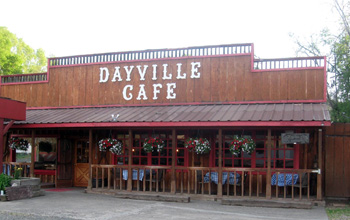 A great choice is Dayville Cafe in Dayville for breakfast, lunch or dinner. Steaks are perfectly cooked to your specifications, the prices are good and the service is great. Finish off your dinner with a slice of fresh-baked seasonal berry pie.
A great choice is Dayville Cafe in Dayville for breakfast, lunch or dinner. Steaks are perfectly cooked to your specifications, the prices are good and the service is great. Finish off your dinner with a slice of fresh-baked seasonal berry pie.
The Sidewalk Cafe and More in Mitchell is a cozy mom n’ pop place that serves standard American fare like homemade pie, burgers and milkshakes–a great stop for lunch.
photos that are not ours: John Day Fossil Beds photos by J. Stephen Conn, by Rupert Ganzer, by Alex Durr, by Amy Selleck, by Ben Amstutz, by Scott Butner, by Frank Kovelchek.
This article has been updated since its original publication on Northwest TripFinder in November 2014.
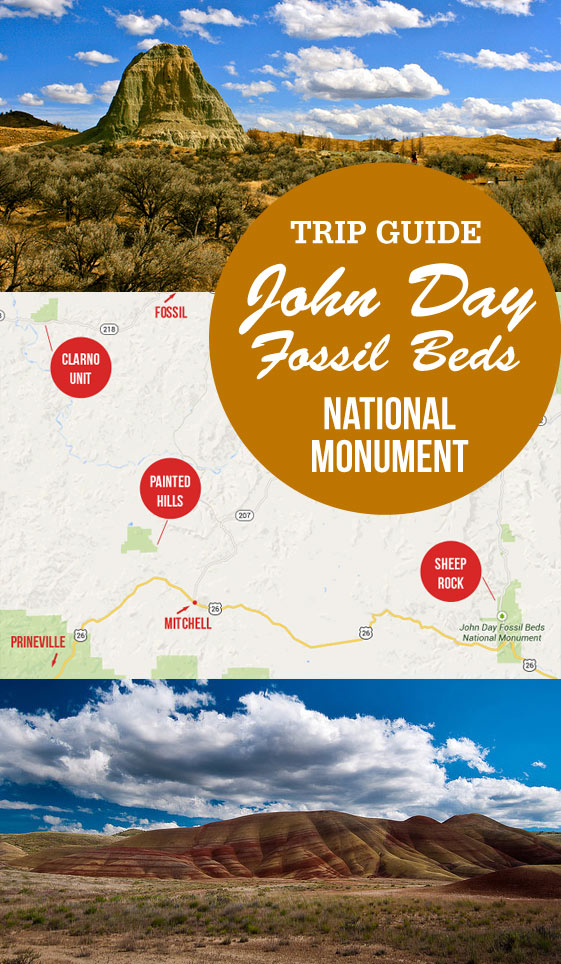
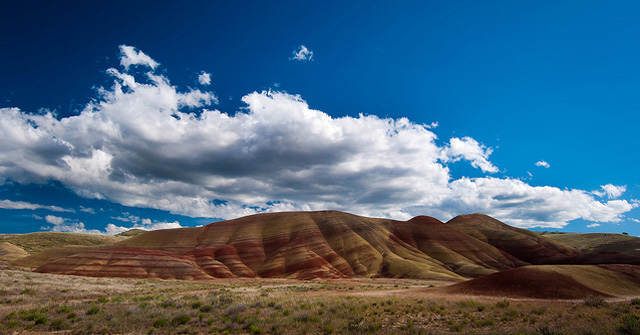


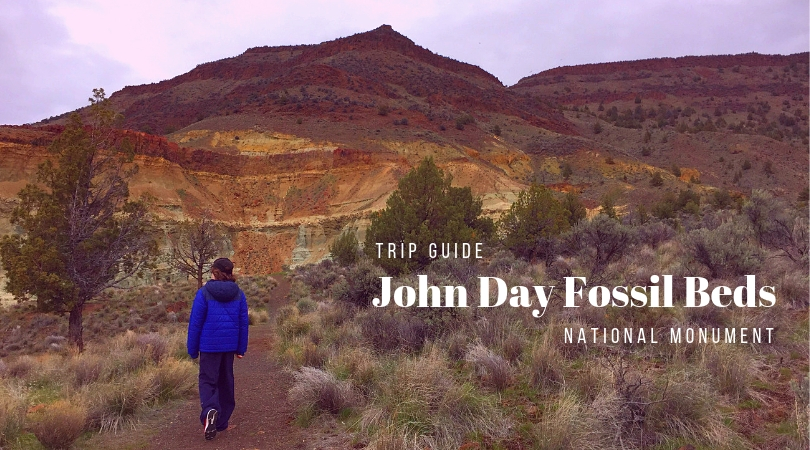


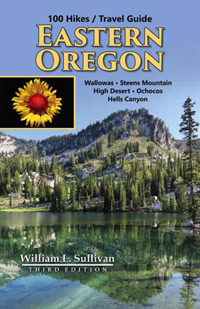
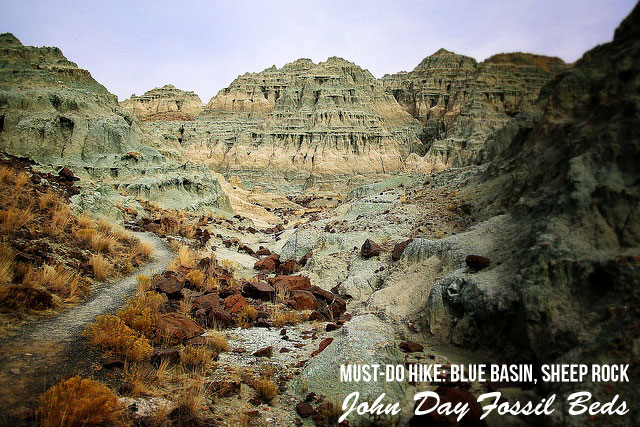

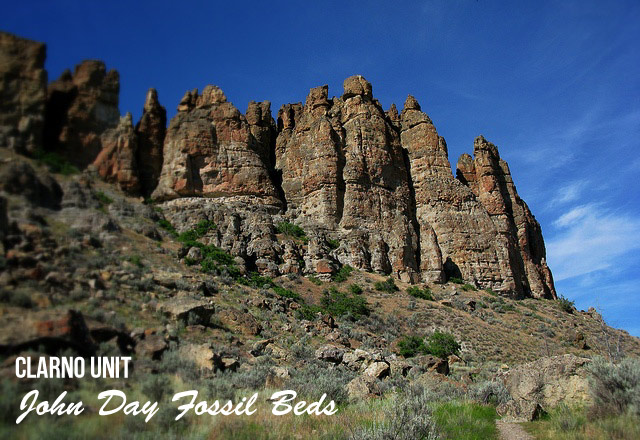
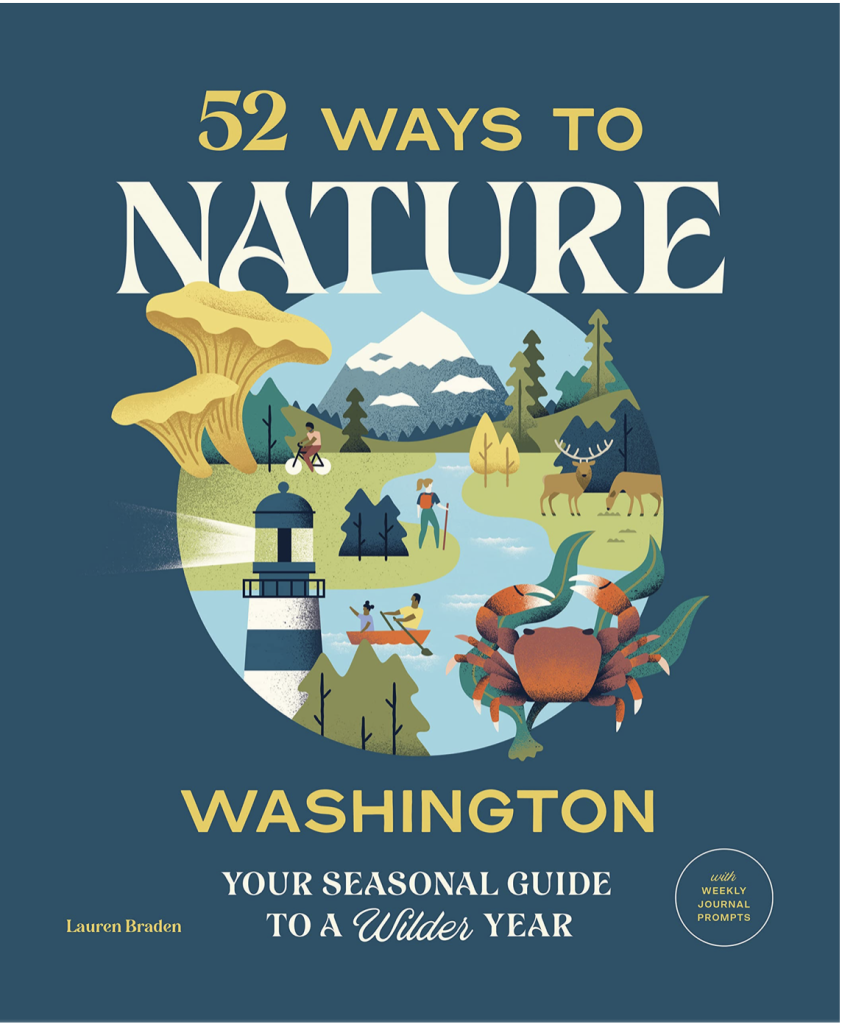


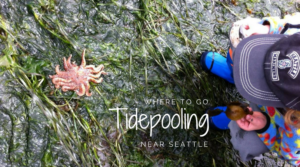

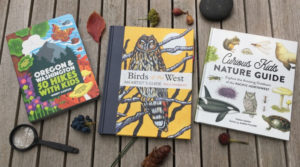

3 Responses
This is an excellent guide! Thank you so much! We were talking about going there next spring and we will definitely refer to thi when we go.
This is definitely a helpful breakdown! Thank you so much for sharing all of this info and suggestions!
Lots of great information. I especially like the break down of the hiking trails. I would not have thought that wheel chair access would be available.